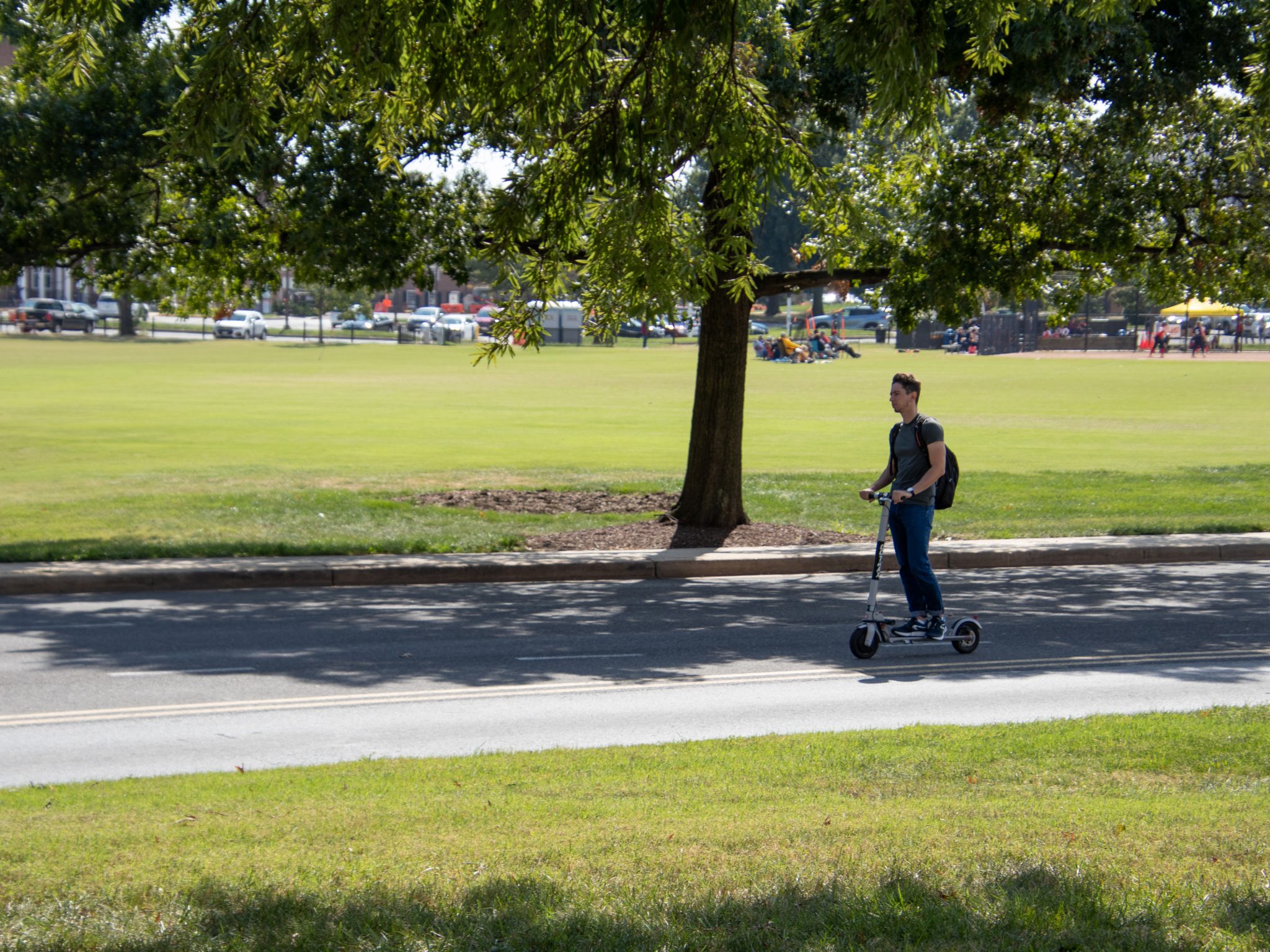University of Maryland DOTS has hosted several campus bike and e-scooter tours in an effort to promote safe transportation habits on campus during safety month in October.
Since last semester, the Department of Transportation Services has been offering campus bike and e-scooter tours, showcasing safe riding routes and practices.
Maddy Cirineo, the university’s bicycle and micromobility program coordinator, takes groups on educational campus micromobility tours about once or twice a month.
The tours have a ride leader as well as a sweep who rides in the back, said Cirineo, who leads most of the tours. She added that the group will stop at stop signs and use turn signals throughout the tour.
Students on campus often ride on sidewalks and without helmets. On the tours, DOTS requires participants to wear a helmet and travel on roads and trails around campus to avoid sidewalks.
Olivia Dinkel, a senior management major, described herself as a frequent VeoRide user. Dinkel said she takes care following traffic rules on an e-scooter.
“Every time I’m driving on the road, I am 100 percent following traffic ordinances as I would if I were driving a car,” Dinkel said.
Dinkel said this year she sees fewer e-scooters on sidewalks, and feels like cars are getting better at sharing the road with micromobility.
“Of course, to be fair, there are some people riding on sidewalks because there isn’t super adequate infrastructure to support Veos getting to certain classrooms by the road,” Dinkle said. “It forces people to park out or drive on the sidewalks.”
[UMD students attribute more than 43,000 parking citations in 2022-23 to overcrowded lots]
Alexandra DeBus, Student Government Association president, said she has seen a rapid increase in micromobility vehicles on campus in her four years at this university. Educating students is crucial to getting them to obey traffic laws, she said.
“I think there’s a component where students genuinely don’t know the rules of what micromobility entails on roadways,” DeBus, a senior biochemistry major, said.
Riding on sidewalks has become less common since the university started putting up signage last year warning people to dismount and walk on sidewalks, she added.
The tour gives an overview of safe routes on campus and campus resources for micromobility vehicles, while providing safety tips along the way.
“Not to toot my own horn, but it’s a good overview of campus and what to expect,” Cirineo said of the tour route.
DOTS also hosts themed rides, like the upcoming Halloween costume tour on Oct. 30 that will visit the most “haunted” places on campus.
Before starting a tour, Cirineo recommends going through the “ABC’s”: air, brakes and chain. Riders should ensure that their tires have air, the brakes are functioning and, if riding a bike, the chain and seat adjustment knobs are secure, she said.
Cirineo’s tip for a secure helmet is to make sure two fingers can fit between the rider’s chin and strap. The helmet should not slide back, she said.
The micromobility tour’s first stop is the campus RecWell Bike Shop, which offers free resources to students, staff and faculty, including bike rentals, maintenance classes and free bike repairs.
Nick Marks, president of Terps for Bike Lanes, said the bike shop is a great resource.
“The workers there are incredibly attentive,” Marks said. “I really like it too because it’s an educational program.”
[UMD students advocate for more e-scooter charging options]
Cirineo leads the tour from the Bike Shop to North Campus and past the Campus Farm, all while staying on the roadways.
Another stop on the tour is the bike repair station near the Iribe Center, one of six on campus.
Next, the tour moves onto Paint Branch Trail, showing where it connects to the Trolley Trail to create a wide semi-circle around campus.
For people who feel uncomfortable riding on roadways, trails such as these have extensive reach. The Trolley Trail can carry a rider from Campus Drive to Riverdale Park, without going on a major roadway.
The tour moves back onto campus for a quick route through South Campus and back to Regents Garage.
In honor of safety month, DOTS launched the Bikeways Project, a study and design process to assess integrating separated bike paths on major campus corridors.
“We all want to find a place for these modes to operate safely on campus,” Marta Woldu, assistant director of sustainability initiatives at DOTS, said at the Bikeways Virtual Mobility Audit event on Oct. 9. “Our primary goal is to implement some traffic calming, reduce stress and increase the comfort level of track traveling on campus roadways and sidewalks.



